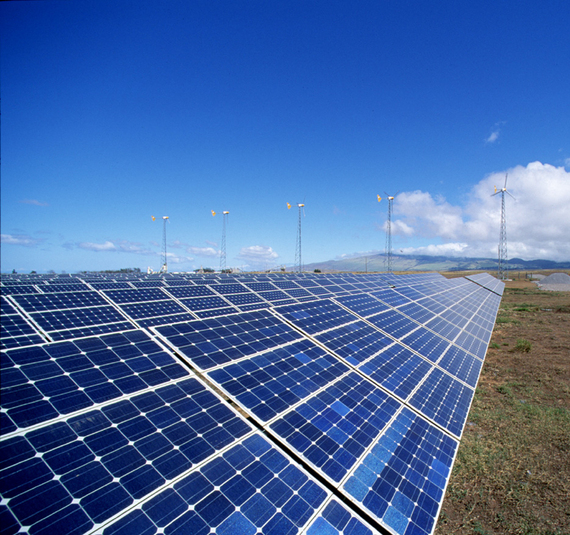This week the U.S. and China announced an historic agreement on climate, and while questions remain about some of the details of the accord, most experts and climate activists agree: a commitment from the world's two largest global warming polluters to slash emissions and invest in clean energy is a big deal.
Observers also agree that their pledge should serve as the starting point, not the end game, for the solutions we need to solve global warming. Earlier this month, after all, the latest climate report from the U.N. concluded that world needed an even more dramatic shift to clean sources of energy by 2050 to avoid "severe, pervasive, and irreversible damage" from global warming.
To help fulfill the President's commitment to curb pollution, and usher in the clean energy revolution scientists say we need, the technology is already here. Pollution-free, virtually limitless solar power is a case in point, and right now, a vibrant solar industry is already raising its hand, eager to be called upon to do even more in our nation's efforts to solve global warming.
Last month, more than 540 solar installers, manufacturers, designers, and other leaders in the industry issued a letter organized by Environment America calling on the White House to make solar energy the centerpiece of the United States' most ambitious proposal yet to curb global warming pollution.
The Clean Power Plan requires a 30 percent cut in emissions by 2030 from power plants, the largest single source of carbon emissions in the country. If the plan is strengthened and implemented to maximize renewables, it also has enormous potential to jumpstart exponential growth in solar power.
The industry has already demonstrated its capacity for vast expansion, and by many measures is already booming. Today, every four minutes another home or business goes solar. According to the latest solar jobs census from the Solar Foundation, the solar industry employed roughly 143,0000 people in 2013, adding more new employees last year than any other sector.
As solar power capacity in the U.S. has grown, its costs have fallen dramatically, dropping 51 percent since the start of 2011. Declining prices are one reason solar is becoming more accessible, more versatile, and even more equipped to play a big role in carbon pollution reductions than every before.
As robust as today's solar market is today, it has only scratched the surface of the possible. Total solar capacity represents just 1 percent of all energy use in the U.S., a far cry from the levels needed to displace fossil fuel sources completely.
Solar power can also be a much larger piece of the Clean Power Plan than federal officials have prescribed. In fact, a recent Union of Concerned Scientists study shows that renewable energy sources deployed as part of the plan could achieve nationwide reductions in carbon pollution of up to 40 percent.
The U.S.-China agreement to curb emissions is a critical, historic step in the fight against global warming, but it won't be the last. To avert climate disaster, we need all hands on deck for the transition to 100% clean renewable energy, and it looks like the solar industry is ready to roll up its sleeves.

